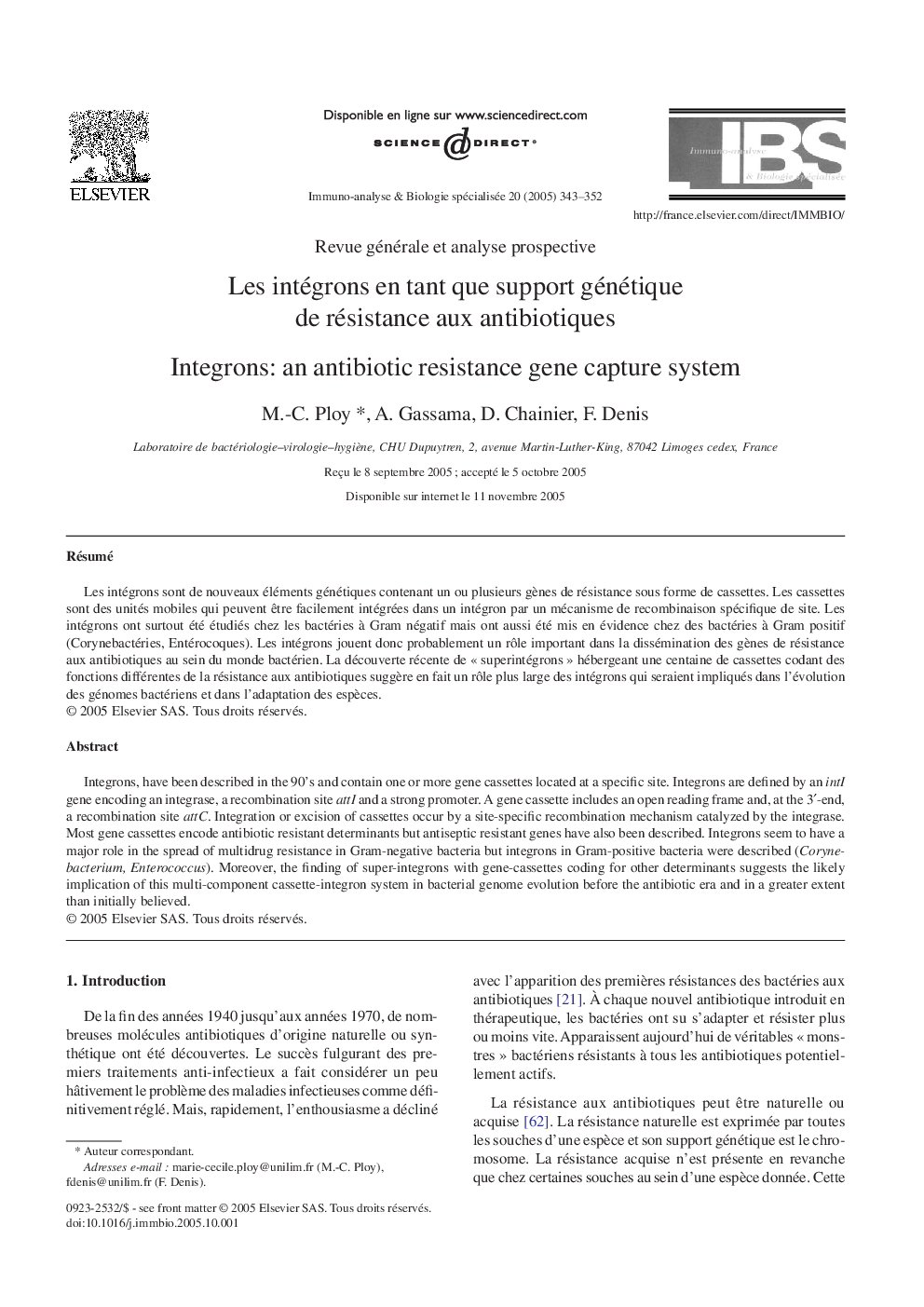| Article ID | Journal | Published Year | Pages | File Type |
|---|---|---|---|---|
| 9912907 | Immuno-analyse & Biologie Spécialisée | 2005 | 10 Pages |
Abstract
Integrons, have been described in the 90's and contain one or more gene cassettes located at a specific site. Integrons are defined by an intI gene encoding an integrase, a recombination site attI and a strong promoter. A gene cassette includes an open reading frame and, at the 3â²-end, a recombination site attC. Integration or excision of cassettes occur by a site-specific recombination mechanism catalyzed by the integrase. Most gene cassettes encode antibiotic resistant determinants but antiseptic resistant genes have also been described. Integrons seem to have a major role in the spread of multidrug resistance in Gram-negative bacteria but integrons in Gram-positive bacteria were described (Corynebacterium, Enterococcus). Moreover, the finding of super-integrons with gene-cassettes coding for other determinants suggests the likely implication of this multi-component cassette-integron system in bacterial genome evolution before the antibiotic era and in a greater extent than initially believed.
Related Topics
Life Sciences
Biochemistry, Genetics and Molecular Biology
Cell Biology
Authors
M.-C. Ploy, A. Gassama, D. Chainier, F. Denis,
